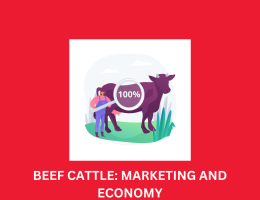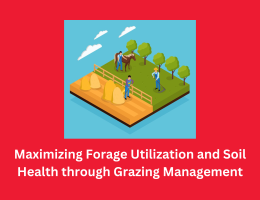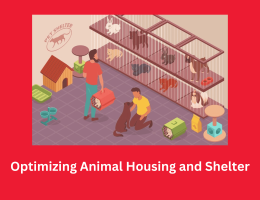
Optimizing Animal Housing and Shelter: Design, Construction, and Considerations for Ventilation, Space Requirements, and Sanitation
- By admin --
- Tuesday, 12 Mar, 2024
Introduction:
Animal housing and shelter are fundamental components of livestock management, providing animals with protection from adverse weather conditions, predators, and environmental stressors. The design and construction of housing facilities play a crucial role in ensuring the health, welfare, and productivity of livestock. This essay explores key considerations for designing and constructing animal housing facilities, with a focus on ventilation, space requirements, and sanitation.
Importance of Animal Housing and Shelter:
Proper housing and shelter are essential for meeting the physiological and behavioral needs of livestock, regardless of species or production system. Adequate housing facilities provide protection from extreme temperatures, precipitation, wind, and solar radiation, minimizing the risk of heat stress, cold stress, and weather-related injuries. Additionally, sheltered environments promote animal comfort, reduce the incidence of diseases, and support optimal growth, reproduction, and performance.
Considerations for Design and Construction:
Designing and constructing animal housing facilities requires careful planning and consideration of various factors, including species-specific requirements, climate conditions, available resources, and management objectives. Key considerations include:
Ventilation:
Adequate ventilation is critical for maintaining optimal air quality, temperature, and humidity levels within housing facilities. Proper ventilation helps remove moisture, odors, dust, and harmful gases such as ammonia and carbon dioxide, which can negatively impact respiratory health and overall welfare. Ventilation systems should be designed to provide sufficient airflow, distribution, and exchange rates while minimizing drafts and air stagnation.
Space requirements:
Providing adequate space is essential for ensuring animal comfort, freedom of movement, and social interactions within housing facilities. Space requirements vary depending on species, age, size, and behavioral characteristics. Factors such as stocking density, group size, and activity levels should be considered when determining space allowances for individual animals or groups. Overcrowding can lead to stress, aggression, injuries, and reduced productivity.
Sanitation:
Maintaining clean and hygienic housing facilities is essential for preventing the spread of diseases, minimizing the risk of infections, and promoting animal health. Regular cleaning, disinfection, and waste management practices are critical for removing organic matter, pathogens, and parasites from surfaces, bedding, and manure handling systems. Proper drainage, flooring materials, and bedding materials can help facilitate sanitation and reduce the accumulation of moisture and microbial contamination.
Structural integrity:
Housing facilities should be designed and constructed to withstand environmental stresses, including wind, snow, rain, and seismic activity. Structural integrity is essential for ensuring the safety and security of animals, handlers, and equipment within the facility. Building materials should be durable, weather-resistant, and non-toxic, with proper insulation and ventilation to regulate temperature and humidity levels.
Environmental enrichment:
Providing environmental enrichment and behavioral stimuli can help alleviate boredom, reduce stress, and promote natural behaviors in confined animals. Enrichment options may include access to outdoor areas, perches, scratching posts, toys, and socialization opportunities. Enrichment strategies should be tailored to the specific needs and preferences of each species and production system.
Benefits of Proper Housing and Shelter:
Properly designed and constructed housing facilities offer numerous benefits for both livestock and producers. These benefits include:
Improved animal health and welfare:
Adequate housing and shelter contribute to reduced stress, injuries, and diseases, leading to healthier and more resilient livestock populations.
Enhanced productivity and performance:
Comfortable and stress-free environments support optimal growth, reproduction, feed efficiency, and milk production in dairy cattle, poultry, swine, and other livestock species.
Reduced veterinary costs and medication use:
Preventing diseases through proper housing and sanitation practices can minimize the need for veterinary treatments, antibiotics, and other medications, leading to cost savings and sustainable production practices.
Compliance with regulatory requirements:
Meeting housing and shelter standards set by regulatory agencies and industry organizations ensures compliance with animal welfare, food safety, and environmental regulations, enhancing the reputation and marketability of livestock products.
Conclusion:
Therefore, carefully consider the design and construction of animal housing and shelter facilities with reference to ventilation, space requirements, sanitation, structural integrity, and environmental enrichment. Adequately designed facilities offer livestock protection against all forms of harsh weather hence facilitating improved health, welfare and productivity of the animals as well as sustainable and ethical livestock production practices.





